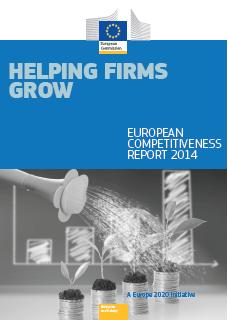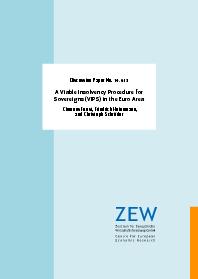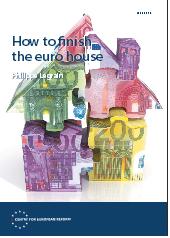Wyplosz, C. (2014) “Is the ECB doing QE?“, VoxEU Organisation, 12 September. Last week, the ECB announced that it would begin purchasing securities backed by bank lending to households and firms. Whereas markets and the media have generally greeted this announcement with enthusiasm, this column identifies reasons for caution. Other central banks’ quantitative easing programmes have involved purchasing fixed amounts of securities according to a published schedule. In contrast, …Read More
No miracles in southern Eurozone without resource reallocation
Xifré, R. (2014) “No miracles in southern Eurozone without resource reallocation“, VoxEU Organisation, 12 September. As the most acute phase of the Eurozone crisis is over, the current-account balances of France, Italy, and Spain have improved. This column warns against complacency about this improvement, pointing at some structural factors that impede growth and damage competitiveness. Resources should be relocated towards the tradeable sectors and to those firms most prepared …Read More
European Competitiveness Report 2014
European Commission (2014) European Competitiveness Report 2014, Commission Staff Working Document SWD(2014)6319 final, Σεπτέμβριος. The European Competitiveness Report, published annually since 1997, gives a quantitative assessment of the competitive performance of EU industries. It contributes to evidence-based policy-making by looking at knowledge gaps in industrial policy. Therefore it supports microeconomic decision-making at EU and national levels. The Report uses empirical research to examine EU competitiveness, working across the whole …Read More
A Viable Insolvency Procedure for Sovereigns (VIPS) in the Euro Area
Fuest, C., Heinemann, F. & Schröder, C. (2014) “A Viable Insolvency Procedure for Sovereigns (VIPS) in the Euro Area“, Centre for European Economic Research (ZEW), Discussion Paper No. 14, August. The euro area debt crisis has revealed serious flaws in the institutional setup of the European Monetary Union (EMU) as it had been designed in the late 1990s (Buti and Carnot, 2012; Hodson, 2013). Although the establishment of a …Read More
How to Finish the Euro House
Legrain, P. (2014) “How to Finish the Euro House“, Centre for European Reform (CER), June. The euro is a half-built house whose foundations have been weakened by successive policy mistakes. Battered by a financial hurricane, it has been patched up, altered and extended repeatedly in recent years. Even so, it became so dangerously unstable that it came to the brink of collapse. Finally, in the summer of 2012 the …Read More
How Europe’s Stimulus Sausage Is Made: Ritholtz Chart
Ritholz, B. (2014) “How Europe’s Stimulus Sausage Is Made: Ritholtz Chart“, Bloomberg View, 09 September. The European Central Bank announced its latest — and belated — program of quantitative easing last week. The ECB made fresh commitments to buy a series of asset-backed securities (ABS), various bonds and expanded its previously announced Long-Term Refinancing Operations (LTROs). The ECB’s brand of quantitative easing is an incredibly complex process. I could …Read More
To exit the Great Recession, central banks must adapt their policies and models
Miller, Μ. & Zhang, L. (2014) “To exit the Great Recession, central banks must adapt their policies and models“, VoxEU Organisation, 10 September. During the Great Moderation, inflation targeting with some form of Taylor rule became the norm at central banks. This column argues that the Global Crisis called for a new approach, and that the divergence in macroeconomic performance since then between the US and the UK on …Read More
Fixing the Eurozone
Koo, R. (2014) “Fixing the Eurozone“, The European Magazine, 03 September. The fact that key economies are currently saving instead of borrowing shows how detached the euro zone has become from the wisdom of conventional economics. Yet there is hope. I have been warning since my first English book, Balance Sheet Recession, that if the U.S., Japan and Europe faced balance sheet recessions, Europe would have the most difficult …Read More
The OMT’s fragile foundations
Mody, A. (2014) “The OMT’s fragile foundations“, VoxEU Organisation, 09 September. Earlier this year, the German constitutional court declared the OMT programme to be inconsistent with EU’s law. This column reviews the legal framework and economic foundation of the OMT. Without any changes in the political structure, the OMT invokes moral hazard in the actions of the member states and unfairness in the distributing the burden of distress. Earlier …Read More
Why does Italy not grow? – The Italian economy has barely grown since it joined the euro area in 1999
Mody, Α. & Riley, Ε. (2014) “Why does Italy not grow? – The Italian economy has barely grown since it joined the euro area in 1999“, Bruegel Institute, 09 September. In April this year, the Italian debt-to-GDP ratio was expected to peak by year-end at 135 percent of GDP. That projection assumed a real GDP growth rate of 0.6 percent and inflation of about 0.7 percent. The projected decline …Read More







